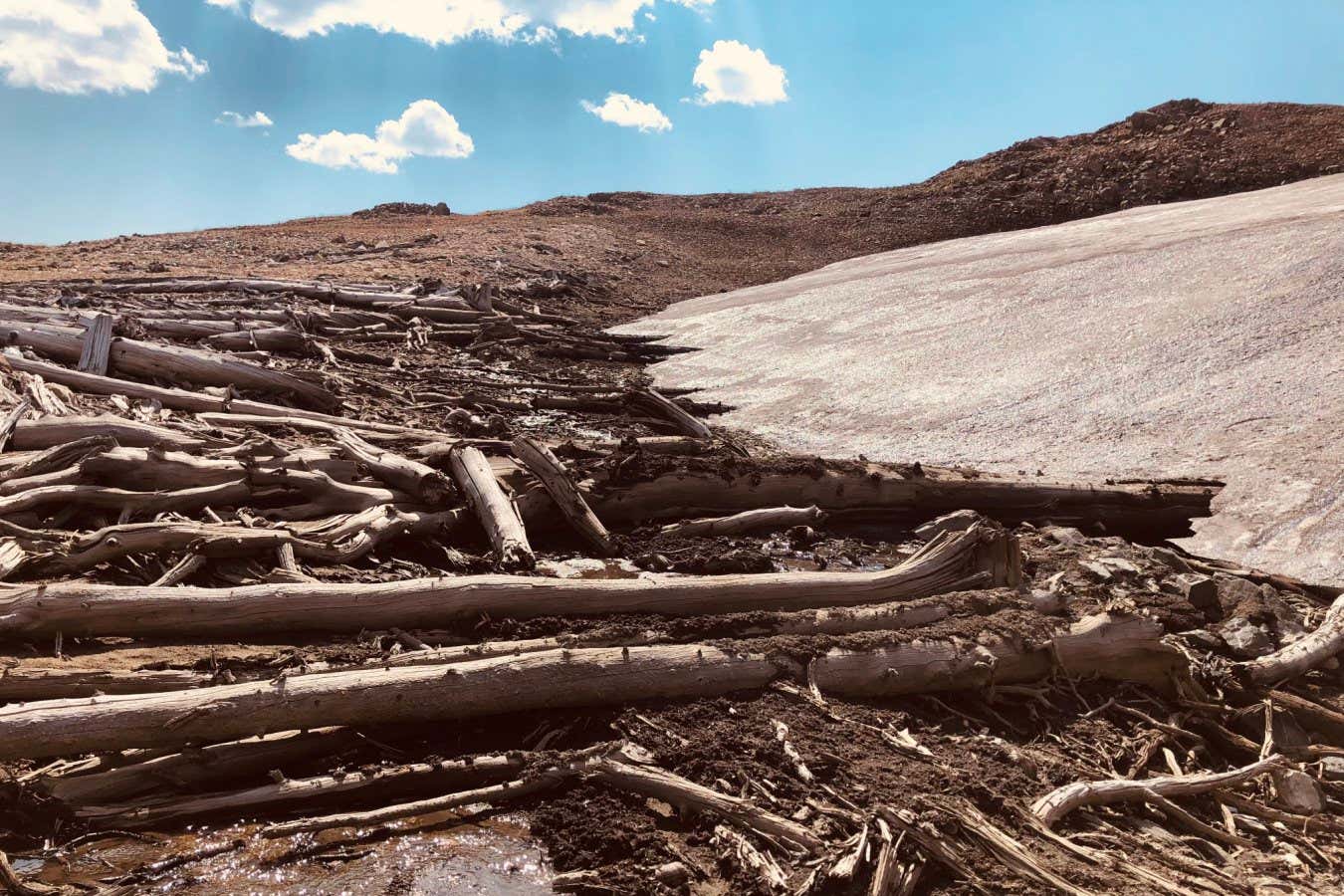Trees dating back almost 6000 years have come to scientists’ attention due to ice melting in the Rocky mountains, offering a “time capsule” into the past
By Taylor Mitchell Brown
13 January 2025
The uncovered whitebark pine trees
Gregory Pederson
A 5900-year-old whitebark pine forest has been discovered due to the melting of alpine ice in the Rocky mountains. Scientists found more than 30 trees approximately 3100 metres above sea level – 180 metres higher than the present tree line – while carrying out an archaeological survey on the Beartooth plateau in Wyoming.
This “offers us a window into past conditions at high elevations”, says Cathy Whitlock at Montana State University. Whitebark pine don’t grow at this elevation now, so these ones had to grow at a time when the climate was warmer, she says.
Read more
Geoengineering could save the ice sheets – but only if we start soon
Advertisement
To understand the history of the lost forest, Whitlock’s team analysed their rings and used carbon dating to age it. They found that the trees lived 5950 to 5440 years ago, a period of steadily decreasing temperatures.
Ice core data from places like Antarctica and Greenland suggest that these falling temperatures were influenced by centuries-long volcanic eruptions in the northern hemisphere. These produced enough aerial sediment to cut sunlight and lower global temperatures until the environment was too cold for these higher-elevation trees to survive.
While laying flat, the newly discovered trees are in exceptional condition, indicating that they were rapidly preserved after death. Although they lack evidence of being covered by avalanches, they show marks that align with the expansion of the present ice patch.
